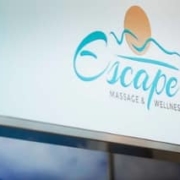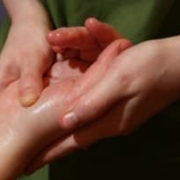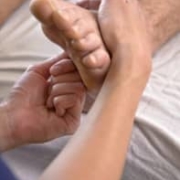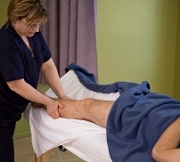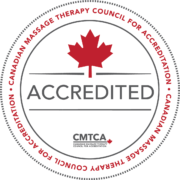Welcome to the second half of our job search guide for massage therapists. In Part 1 of this guide, we covered how to determine what that perfect position will look like for you, and how to start finding opportunities that fit those goals. Today, we’ll discuss how to prepare for and ace your interviews, and how to handle contract negotiations.
Step 1: Be Prepared
I have sat on both sides of the job interview table in my career, and the most valuable lesson I’ve learned from this experience is that preparation is essential. As an applicant, I’ve been most successful when I’ve taken the time to research the position and the company, anticipate their questions, and come up with a few of my own. Similarly, there’s hardly anything that impresses me less as an interviewer than someone who obviously didn’t bother to prepare properly: either they have to fumble for answers to my questions, know nothing about the business or industry, or have no questions of their own. And you’d be surprised how often it happens!
Set yourself apart from the other applicants not just by your excellent training, but by doing your homework before the interview. If you’ve taken all the recommended steps from Part 1 of this guide, you’re more than halfway there.
Consider the interview as a conversation, not an interrogation. It’s an opportunity for both of you to learn about each other. They will want to know about your training, goals, strengths, and weaknesses. Try to anticipate their questions, and practice your responses. Why should they hire you?
Get ready to interview them, as well. What do you need to know in order to feel confident taking this position? Prepare a list of questions or topics to cover during (or before) the interview. Here’s a few to get you started:
- What type of massage will you generally be providing? Do most of their clients book relaxation massages, or therapeutic ones? Does the clinic specialize in certain conditions or techniques?
- What do they charge for a massage?
- Will you be an employee, or a contractor? If on contract, will it be a commission split, or a flat monthly room rental?
- If you’re an employee, what benefits (if any) do they offer?
- What is the split amount? Is there a scale or cap?
- What services will the employer provide? For example, if the commission split is 60/40, you need to know what they’re doing to earn their 40%. Ask about marketing, reception, supplies (ie, linens, oils, laundry), etc.
- Will you be expected to sell products?
- Is there a minimum time between treatments? Some clinics only allow 15 minutes between treatments.
- Is there a minimum or maximum number of bookings per week? How much control will you have over your own hours?
- Does the clinic have a policy manual?
- How long have they been in business?
- How long in advance do clients currently have to book their appointments? This is an easy way to gauge how busy you’ll be when you join them.
- Are there clinic-specific processes and paperwork you’ll expected to follow? What forms do they use for health histories and assessment and treatment planning?
- Is there a dress code?
- Is the clinic owner present in the clinic on a regular basis? If not, is the clinic managed day to day by a manager or receptionist?
- What continuing education support do they offer, if any?
Since you’ve already reviewed your priorities and goals, it should be easy to determine what answers you need to hear to these questions in order to be comfortable taking the job. Don’t be afraid to print off a list of questions to bring with you to the interview.
Step 2: The Interview

Finally, it’s time to put all that preparation to the test! My first piece of advice is to be confident. Not just because confidence and a professional manner are two of the “intangibles” that employers look for, but because you deserve to be. You have worked very hard and have been trained to the national standard. You have a lot to be proud of, and the interview is the time to show that off.
Your interview is likely to have two parts: a conversation with the employer, and a massage. When setting up the interview, confirm whether they’d prefer both during the same appointment, or if they’d like you to come back later for the massage (or vice versa). Wear your scrubs to perform the massage.
The interviewer may ask you to perform specific techniques, but most likely you’ll just be asked to perform a relaxation massage. Make sure you’re clear on their expectations regarding the style and length of the massage at the outset. Regardless of the style of massage, make sure you do a thorough health history and assessment. As you work, describe what you’re doing and why. Try to impress them with your flow, rhythm, and tissue engagement skills. This is also a great opportunity to discuss all the other techniques and modalities you’ve been taught, from hydrotherapy and remedial exercise, to seated and sports massage. Make sure they know how well you understand the concepts of assessment and treatment planning, and the conditions you’re able to treat.
Step 3: Don’t Settle
Remember, just because you’re offered a job doesn’t mean you have to take it. There are lots of jobs out there, so you don’t have to accept anything that doesn’t meet your standards. We recommend that you apply at a few places, and choose your favourite.
Don’t be afraid to walk away if something doesn’t feel right. What constitutes a red flag, or even a deal breaker, will vary from person to person. But here are a few specific things to watch out for during the interview and contract negotiation process:
- Is the clinic clean? Does it seem organized and professional?
- Do they have a comprehensive record-keeping system for health histories, SOAP notes, etc?
- Is the employer vague about what your duties or responsibilities will be?
- Do they seem more interested in hiring a salesperson than an RMT?
- Do you feel comfortable with the number of shifts you’ll be expected to work?
If you’re still happy, it’s time to get down to the small print…
Step 4: No Loose Ends
A clearly written contract (or rental agreement) is essential. No matter how much you like and trust your employer or landlord, it’s imperative that you have the details of your business relationship in writing, in advance. Circumstances and relationships change, and memories can be fuzzy. Having a detailed written contract will protect both of you, and provide an easy reference to resolve misunderstandings and disputes.
Ideally, your contract won’t hold any surprises. Since you were so prepared for your interview, and asked so many great questions, it should simply reiterate what you’ve already talked about. Read it thoroughly before signing it, to make sure that you still agree with everything in there. It may be a good idea to have a friend or fellow RMT take a look before you sign. Don’t be afraid to ask the employer about anything you find unclear; request that they rewrite any confusing sections before you sign.
In addition to the topics included in the questions above, make sure that your contract is clear on your start date, what happens when you leave the clinic (what notice is required from both sides? Who will own client files? Is there a non-compete clause?), holidays and sick days (if you’re an employee), and what the grievance and disciplinary procedures are should either of you have a problem.
Congratulations on your first RMT job! We are incredibly proud of you and all that you’ve accomplished over the past two years, and are excited to watch the next step in your journey.
Your first RMT position is really important; it’s your first “real world” experience as a massage therapist, and will help set the tone for the rest of your career. Finding a job that excites and inspires you, in an environment that offers both challenges and support, is essential. We hope that having done all this research and preparation will ensure that your first job will fit the bill. But it might not, and that’s ok. It’s alright to leave! Even a bad experience can be worthwhile, as long as you learn from it.
We wish you the best.
It’s that time of year again—job search time! Every spring, second-year Vicars students look beyond their upcoming final exams and begin securing RMT positions in their communities. And those efforts pay off! Last year, 65% of our graduating students already had positions lined up when they graduated; a further 29% had secured a place within three months of finishing the program.
These fantastic results are thanks to our students’ diligence and proactive attitudes, and the Vicars reputation. Across Western Canada, employers know that Vicars therapists are some of the best in the biz.
To help this year’s graduating class achieve just as much success as previous alumni, we’ve put together some of our best advice on how to find a great job as an RMT. We had so much to say that we divided it into two posts.
Keep reading below for help choosing the right position for your needs, researching clinics, and finding job postings. Check back soon for our advice for the interview itself. Special thanks to Linda McGeachy in Calgary and Laura Finley and Adena Mai-Jardine in Edmonton for sharing their wisdom.
Massage therapy jobs are like massage therapists themselves; no two are exactly alike! Because they’re such great therapists, Vicars grads have their choice of the best jobs—but what’s best for one student might not suit another. So the first step to finding the perfect RMT position for you, is…
Step 1: Know Thyself
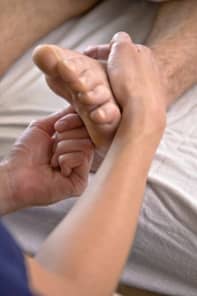
In order to find a clinic environment that meets your needs, you need to know what those needs are. Take a few moments (or hours, or days) for honest self-reflection. Think about your goals and passions, and your strengths and weakness, both personal and professional (it’s easy to forget how much those overlap).
Consider the following questions—it may even be useful to sit down and write out the answers for yourself.
- When I envision my perfect clinic environment, what does it look like? Why? What attracts me to it?
- Do I want to be self-employed (either completely on my own, or as a contractor in someone else’s clinic), or an employee?
- Which is a higher priority to me right now? Flexibility, income, type of massage I perform, or something else?
- What are my strengths as a massage therapist? What are my weaknesses? (Be honest! Your ideal workplace is somewhere that will take advantage of your strengths, and help support you in areas where you’re less confident).
- Do I want to do mostly relaxation, or mostly therapeutic massage?
- Are there particular conditions, populations, or techniques that really excite me?
- Do I want to work with other RMTs, other health practitioners, or even alone?
- How involved do I want to be in the business side of massage therapy? Am I comfortable being responsible for my own marketing, booking, etc?
- How far am I willing to commute for work?
- What days and hours am I willing to work?
Answering these questions will help you determine what type of position you should search for.
Speaking of which…
Step 2: Entrepreneur, Employee, or Contractor?
RMTs work in large and small massage clinics, wellness centres, spas, gyms, in their own homes… wherever they please, basically!
In addition to choosing your preferred working environment, you’ll also need to know whether you’d like to work for yourself (either starting your own business or as a self-employed contractor), or for someone else as an employee. There are advantages and disadvantages to both.
If the entrepreneurial life is for you, we recommend you go back to the business plan you completed in the fall. Assuming you took the time to craft a realistic plan (of course you did!), that assignment will be an enormous help to you now. In the past, Vicars grads have taken that completed assignment directly to the bank. We recommend that you review it to ensure that it’s still an accurate reflection of the business you’d like to start, and then you can get cracking!
(By the way, even if you don’t want to start your own business, it’s worth your time to review that assignment, as it may help you answer some of those questions from the previous section).
If you’d like to work in someone else’s business – be it a chiropractic office, massage clinic, or gym – decide whether you’d prefer to be a contractor, or an employee. As a contractor you will generally have more freedom, but also more responsibilities. An employee has less say in their hours, rates, etc, but will often have to do less on the business side.
So now you know the type of environment in which you’d like to work, and the role you’d prefer to play there. All you have to do now is find it…
Step 3: Looking for Openings
A great place to start is the school’s very own Facebook page. We get new job postings every week from clinics all over the province, and put them up there in chronological order. But don’t assume that just because a posting is a few weeks old, it’s no longer relevant. Because the massage industry is booming, and our alumni are mostly fully employed, many of those jobs won’t have been filled yet. Scroll through all the listings from the last few months, and see what catches your eye. Local listings in newspapers and online may also be useful.
But don’t be limited to job postings, especially if you’re outside one of the big cities – take the initiative, and you’ll be rewarded. Find a clinic that looks promising, and walk right in!
Search for clinics in your community (use Google Maps, the Yellow Pages, recommendations from friends, etc) that look like they might fit your parameters, and check them out. Check out their website, and look for reviews on sites like Yelp. Stop in to introduce yourself, and to get a general “feel” for the place.
If it still seems promising, we recommend booking a massage there, even before you’ve applied. You don’t have to share any more information than you feel comfortable with, but feel free to introduce yourself as a massage therapy student.
Once you’ve narrowed down your list, it’s time to start applying! We’ll discuss interviews and contracts in Part 2, but in the meantime I’ll leave you with two words: Cover Letter. Always include a cover letter as part of your application. No exceptions. It gives you a chance to introduce yourself and explain why they should consider you above other applicants, but it also shows that you’ve taken that little bit of extra effort.
Good luck, and check back soon for Part 2, Interviews and Contracts!
 Massage therapy is a satisfying and rewarding career that can be a perfect fit for energetic, caring people. As an RMT, you’ll enjoy all the benefits of being front-line health care professional – working closely with clients to improve and maintain their wellness – without the long hours and shift work. If you’ve received a professional massage before then you’ll have a rough idea of what the hands-on part of an RMT’s job is like. But if you’re considering becoming an RMT, that’s not all you need to know!
Massage therapy is a satisfying and rewarding career that can be a perfect fit for energetic, caring people. As an RMT, you’ll enjoy all the benefits of being front-line health care professional – working closely with clients to improve and maintain their wellness – without the long hours and shift work. If you’ve received a professional massage before then you’ll have a rough idea of what the hands-on part of an RMT’s job is like. But if you’re considering becoming an RMT, that’s not all you need to know!
What do RMTs make? Where do they work? What are the hours? To help with your research, we’ve created a massage therapy career guide to answer some of the most common questions we get from prospective students.
How much do massage therapists make?
A well-trained massage therapist can earn a very comfortable income, but exactly how much money you make will depend on your type of practice, where you are, and how much you work.
A registered therapist with a 2200-hour registered massage therapy diploma who works full time (that is, giving around 20-25 massages per week) can expect to make between $60,000-$72,000 a year. If you’re working in a city like Calgary or Edmonton, you or the clinic you work for will probably charge between $75-$100 for an hour massage (Your rates may be lower in a small town or rural area, but your expenses may be too). That said, you don’t pocket all of that. If you’re running your own clinic, you will have to cover rent, supplies, laundry, advertising, and other expenses. If you’re an employee or contractor in a spa, wellness centre, or another massage clinic, you’ll split that fee with your employer (60-40 is pretty standard). If you own a clinic and employ other therapists or practitioners, you’ll make more.
Will I be able to find a job?
Massage therapy is a fast-growing profession in Alberta and across Canada. The Alberta government rates the career’s growth prospects as “above average.” As in any profession, your personal job prospects will depend on how good a therapist you are, and what kind of training you have.
MH Vicars graduates have an extraordinarily high employment rate: in 2014, 96% of Edmonton graduates and 98% of Calgary graduates found jobs within months of graduation. We believe that our therapists do so well because of the high quality of our curriculum and our first-rate instructors.
What kind of training do I need in Alberta?
 Massage therapy is not a provincially regulated profession in Alberta or Saskatchewan (the regulated provinces are BC, Ontario, Newfoundland, and New Brunswick). This means that there is no official entry-to-practice standard, and what regulation and standardization we do have is up to the professional associations and insurance companies.
Massage therapy is not a provincially regulated profession in Alberta or Saskatchewan (the regulated provinces are BC, Ontario, Newfoundland, and New Brunswick). This means that there is no official entry-to-practice standard, and what regulation and standardization we do have is up to the professional associations and insurance companies.
In Alberta, only therapists who have graduated from a 2200-hour diploma program are able to get insurance billing numbers. A therapist whose clients can’t have their receipts reimbursed will have a much harder time finding clients, but can technically still practice. After they complete their training, most massage therapists join a professional association. Different associations have difference admission standards.
But at MH Vicars School, we don’t think that counting hours is good enough. We believe that the standards should be based on what you know – competencies. This is why our 2200-hour program meets the national curriculum and delivery standards set by the Canadian Consortium of Massage Therapy Regulators, one of the few schools in Alberta to do so. We were also the first school to be placed on the Massage Therapist Association of Alberta’s Approved Programs list.
Where do massage therapists work?
Almost anywhere! Massage therapists work in many different environments, so you will have a lot of choice when you graduate: working for yourself in your own clinic or from home; with other RMTs in a dedicated massage clinic; in a wellness centre alongside doctors, chiropractors, nutritionists, acupuncturists, or other practitioners; at a gym; or at a spa or resort. Visit the job listings on our Facebook page to see the kinds of jobs employers are offering right now!
How long will my career last? Should I worry about physical burn-out?
In order to take care of others, you need to take care of yourself. Massage therapy is an active career, and like other physical professions there is a risk of occupational injuries. But most of these are highly preventable, and if you practice good technique and self-care you can plan on a long and satisfying massage career.
The key to longevity in massage therapy is good body mechanics. MH Vicars instructors are sticklers for safe technique, for good reason. Poor body mechanics can lead to exhaustion and repetitive stress injuries, not to mention a sub-par massage! It’s also important to keep fit and avoid overworking yourself.
Respect your body, choose an employer who does the same, and you’ll be comfortably massaging for years to come.
I hope this has helped answer some of your questions about what it’s like to be a massage therapist, and what you need to do to succeed! Going back to school and changing careers is a big decision, so it’s important to do as much research as you can.
Please don’t hesitate to contact us if you have any questions (1-866-491-0574 or info@mhvicarsschool.com). We also recommend that you talk to a working RMT. They will be able to offer even more insight about their day-to-day work. You can find an MH Vicars grad near you here, or book an appointment at one of our public clinics.

